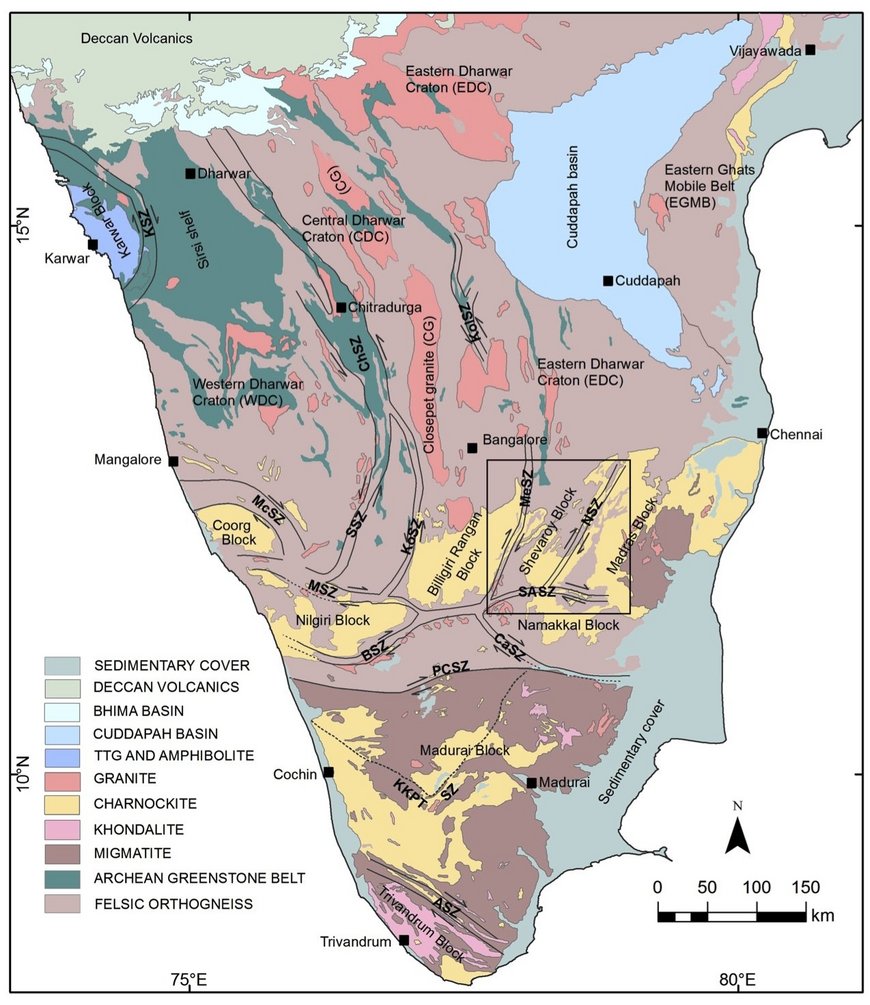Untersuchungen zur Entstehung und metamorphen Entwicklung von hochgradigen, Archaean Terrane am Südrand des Dharwar Craton, Südindien

Text existiert zur Zeit nur in englischer Sprache:
The southern margin of the Archaean Dharwar craton, southern India is dominated by a series of tectonic blocks (Coorg, Shevaroy, Nilgiri, Namakkal, and Biligiri-Rangin) separated from each other by a complex set of shear zones. These tectonic blocks consist of Archaean (3.0 - 2.5 Ga) amphibolite- and granulite-facies granitoid terranes, which are plagioclase-rich and K-feldspar poor. The granulite-facies portion of each terrane is rich in orthopyroxene as opposed to the biotite- and amphibole-rich, orthopyroxene-absent amphibolite-facies portion.
The goal of the current project involves a detailed mineralogical and geochemical investigation of each of these blocks. These include investigations into oxide-sulphide relations and the role of oxidation; phosphate mineral associations involving fluorapatite and monazite; and silicate-oxide mineral chemistry, petrography, and P-T estimation as a function of metamorphic grade. Evidence for, and speculations concerning, the role of high-grade fluids in mass transfer, oxidation, metasomatic alteration, and conversion of biotite and amphibole to pyroxenes during regional granulite-facies metamorphism is one of the primary objectives of these investigations. The results from this study will then be applied on a more global scale to granulite-facies terranes worldwide in order to build up a larger worldview on the role of high-grade fluids during physical processes in and during the evolution of the continental lower crust.
Partner
Vinod Samuel / George Matthews / Ishwar Kumar / Sajeev Krishnan - Centre for Earth Sciences, Indian Institute of Science, Bangalore

